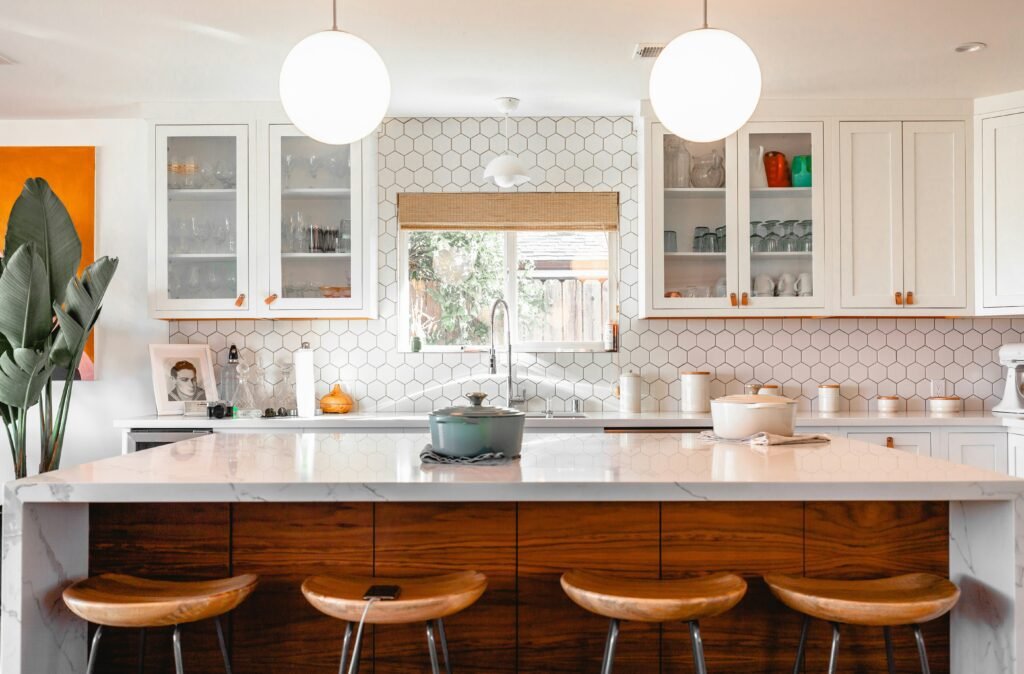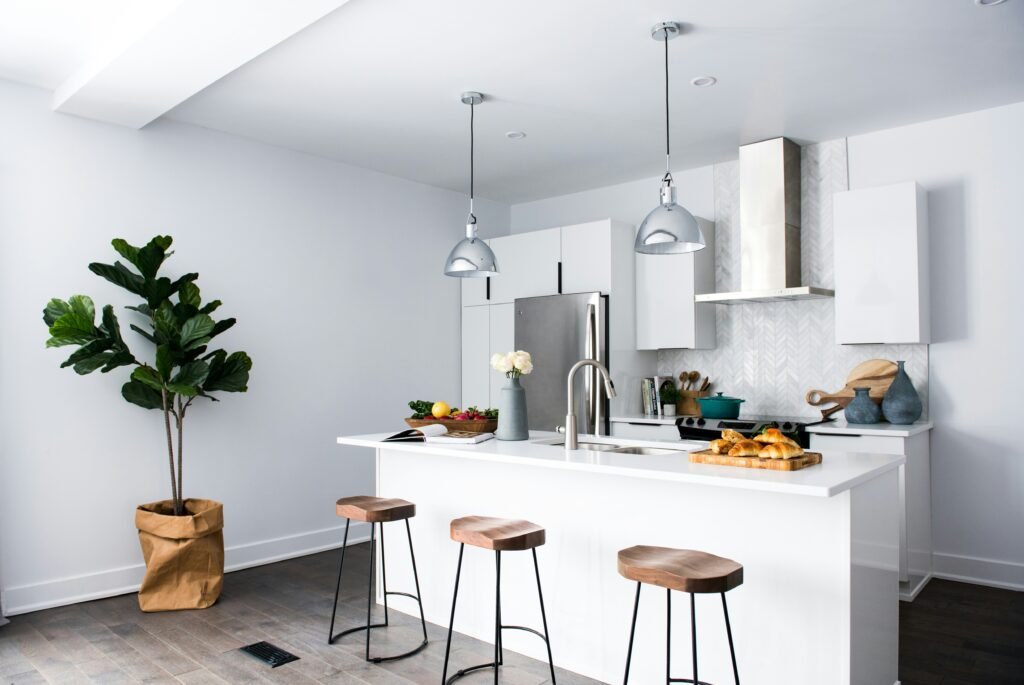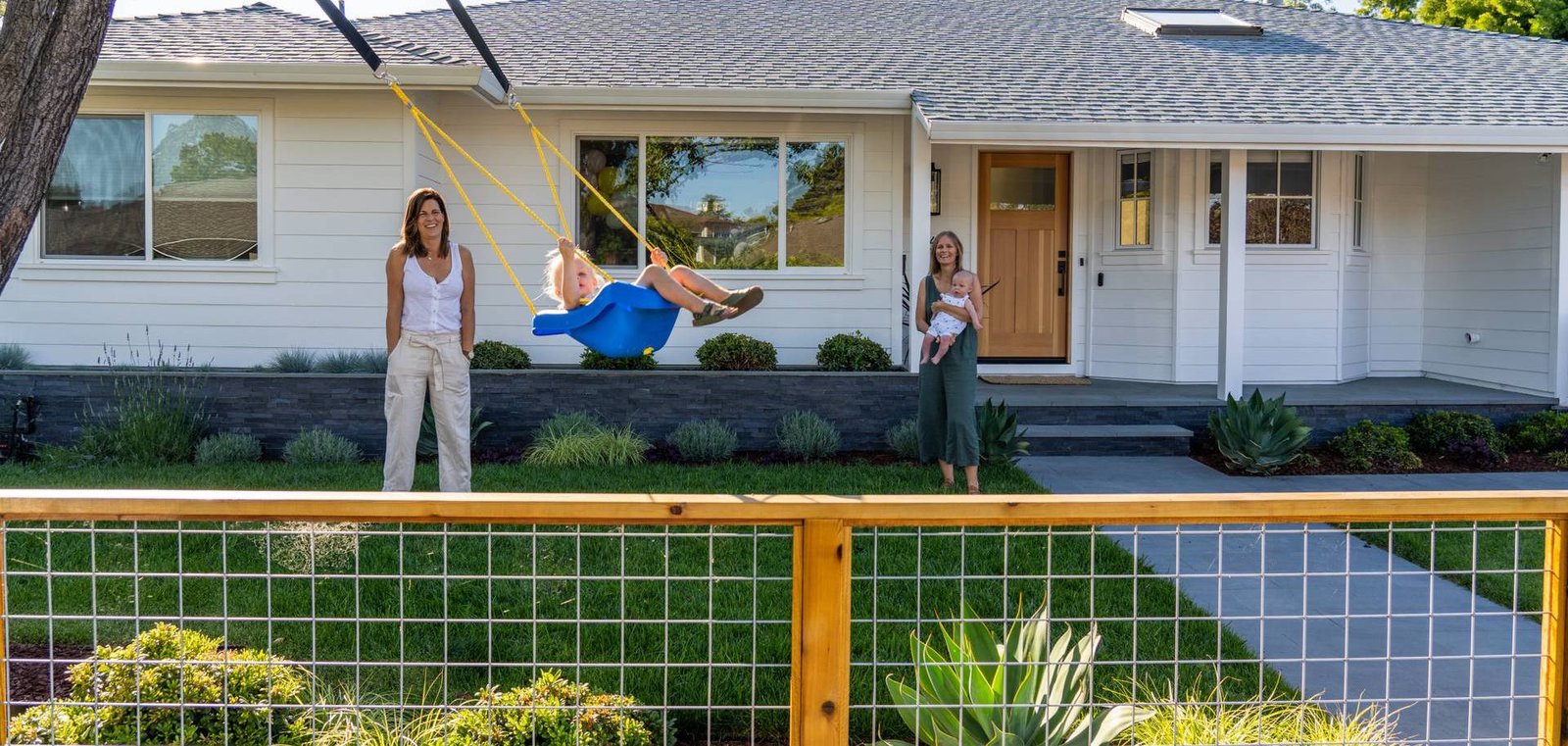
According to Design Experts, 8 Kitchen rug Placement Rules you Need to Know to Lock Down Rug Positioning in This High-Traffic Room
Get rug positioning locked down in this high-traffic room
As kitchens become much more sociable spaces, used not just for cooking but throughout the day, kitchen ideas become cozier and more inviting. Introducing color, texture, and pattern is the secret to a liveable space, and kitchen rugs play a pivotal role.
‘Rug placement in a kitchen might not feel as obvious compared to rooms where having a rug is standard. However, the kitchen is just as much a living space as any other, and the same rug placement rules apply,’ points out interior designer, Kara Childress.
Regardless of placement, a low-pile or flat-weave style rug works best in the kitchen, as it minimizes trip hazards and allows for easy maintenance in this high-traffic area. Ensure your chosen rug has a non-slip backing or use a separate anti-slip mat beneath to secure your rug in position. This latter point is vital in a room in which you carry hot pans.
Kitchen Rug Placement Rules
From defining traffic routes and protecting flooring to improving comfort and enhancing design cohesion, understanding the principles of kitchen rug placement will help ensure your kitchen rugs are a worthy investment and reach their full design potential. Read on to learn the secrets of mastering kitchen rug placement from the experts.
1. TWO CAN BE BETTER THAN ONE

There are many reasons why two rugs can work better than one. Annie Burrows, the lead designer at Blakes London, advocates doubling up underfoot. ‘Rugs tend to become disproportionately more expensive the larger they become, so choosing two rugs not only allows for more choice on the market but also increases flexibility and practicality in situ, all while likely being a more cost-effective solution,’ she says.
Two rugs create a more contemporary aesthetic to one long runner helping to break up and soften a long, narrow walkway. ‘Hygiene wise, two smaller rugs are easier to move and clean beneath and are also more likely to fit within a standard washing machine, because should you wish to place a rug in a kitchen, we really would suggest it’s machine washable,’ adds Annie.
Smaller rugs are easier to position strategically in high-traffic areas to help with the wear and tear of a floor. This is particularly important if using natural porous stones or timber. Smaller rugs are also easier to adjust periodically which can help to avoid patchy sun damage to the floor.
2. PLACE A RUG UNDER A PORTABLE ISLAND OR TABLE

If your central kitchen feature is a cook’s table or portable kitchen island unit, Juliana Lane, cofounder of Juliana LaneInteriors, recommends placing a rug beneath. ‘When designing a multipurpose kitchen or working within a tight space, having a mobile island or central table is incredibly convenient as they can be moved out of the way when more space is required for entertaining,’ she says. ‘However, the weight of the island can potentially damage the flooring. To address this issue, adding a rug and rug pad can protect while also adding a practical and soft surface to stand on.’
Beyond functionality, Hanna believes a central rug serves as a nice detail and can prove more practical than runners in the space, as they may otherwise get shifted around in a high-traffic zone. ‘Additionally, if the island or table accommodates seating, the rug will create a cozy and inviting environment,’ she adds. ‘Depending on the island size, the rug size is recommended to be 1-2ft wider than the island on both ends of where the island waterfalls, and 3-4 ft where stools are placed and on the opposite side of the stools to match.’
3. ALLOW A DECENT GAP AROUND THE FULL PERIMETER

One of the worst kitchen rug placement crimes that no experienced designer commits is positioning rugs tight up to the kitchen cabinets. ‘Rugs always need space to breathe,’ explains Kristine Renee, co-founder of Design Alchemy. ‘A minimum of 6” on all sides is a good rule of thumb. If you sandwich a rug directly against cabinetry or appliances, the room immediately feels cramped and appears smaller. A rug should ground the space, while also providing warmth and an added layer of durability in high-traffic areas.’
4. DO USE RUGS TO ZONE

Few things disrupt the visual clarity of a kitchen than randomly placed rugs that neither anchor nor define. ‘Using rugs to zone different areas in your kitchen is both practical and stylish – we particularly recommend assigning rugs to specific areas like cooking, dining, and prep,’ says Ginger Curtis, Founder & CEO of Urbanology Designs.
When zoning with rugs, it’s important to choose your rug material according to the area it is placed in. For example, in the cooking area, you’ll want something washable, outdoor rugs are also worth considering as they are generally very hardwearing. In a soft seating area, go for softer, deep piles of rugs that dial up the comfort levels.
‘Coordinate rugs with your kitchen’s decor for a cohesive look. It doesn’t need to match exactly, but it should complement beautifully,’ adds Ginger.
5. GO LONGER THAN THE ISLAND

Using a runner in the kitchen is a great way to warm up the space and add some visual interest. If you’re scaling a runner-style rug with a kitchen island, either stay within the island width or go past it by several feet. If the rug’s length only goes past the island by an inch or two, it doesn’t look intentional.
Having the runner extend beyond the kitchen island is interior designer Linda Eyles’ preferred rug placement rule. ‘The whole space feels more generous, in the same way that doing tall draperies makes a room appear bigger,’ she explains. ‘Islands are, by nature, smaller than the perimeter counters, so you want the runner to relate to the space as a whole. If you only go as big as the island, you cut off the rest of the room. Plus, a longer runner gives you more color and texture, which leads the eye through the space.’
6. CENTER YOUR RUG ON A STRONG FEATURE

In the same way that you should center a living room rug on the fireplace or a bedroom rug on the bed, aligning with a focal point will have an anchoring effect and ensure your kitchen rug placement appears considered and balanced.
‘A key kitchen rug rule is to center your rug on a key feature within the space, such as this antique rug which was placed in direct sightline of the sliding pantry door,’ confirms interior designer, Kara Childress. ‘The balance between the old-world feel of the rug and the reclaimed kitchen door harmonizes the entire space, Additionally, centering the rug on this commonly accessed door adds a visual flow and redefines the kitchen area.’
7. PLACE RUGS ACCORDING TO COMFORT AND CONVENIENCE

Strategically selecting rugs of varying thicknesses based on their placement in the kitchen will create a functional and comfortable environment that enhances both your cooking experience and the overall aesthetics of the space.
Introducing a thicker rug in front of the cooker provides a plush and comfortable surface underfoot, ensuring that you can cook up a storm in comfort. The added cushioning helps to alleviate fatigue and strain on your feet, making culinary marathons more enjoyable,’ says interior designer, Juliana Lane. ‘Over by the sink area, we’d recommend opting for a thinner rug, which will dry faster and is less likely to retain moisture.’
8. ALWAYS COVER YOUR EXITS

If your kitchen has doors opening directly out into the garden or patio it’s vital to position a rug or doormat, at the main entry/exit point. Strategically placed rugs will help protect the floor from dirt, debris, and moisture that may be tracked in from outside, preventing potential damage and wear to your kitchen flooring.
‘Even if your kitchen floors are extremely practical, like porcelain tiles for example, having doormats available for family and guests to wipe their feet or remove their shoes if preferred, will help keep the kitchen clean and hygienic,’ adds Dean Keyworth, founder of Armstrong Keyworth.
Choose rugs made from fit-for-purpose materials such as rubber-backed microfiber or coir. Machine washable rugs can also work well if you want something softer and less “hallway”. Consider a runner if you have a wide expanse of sliding or bi-folding doors. Ensure your chosen rug has a non-slip backing so it won’t trip children up as they run in and out of the garden.








